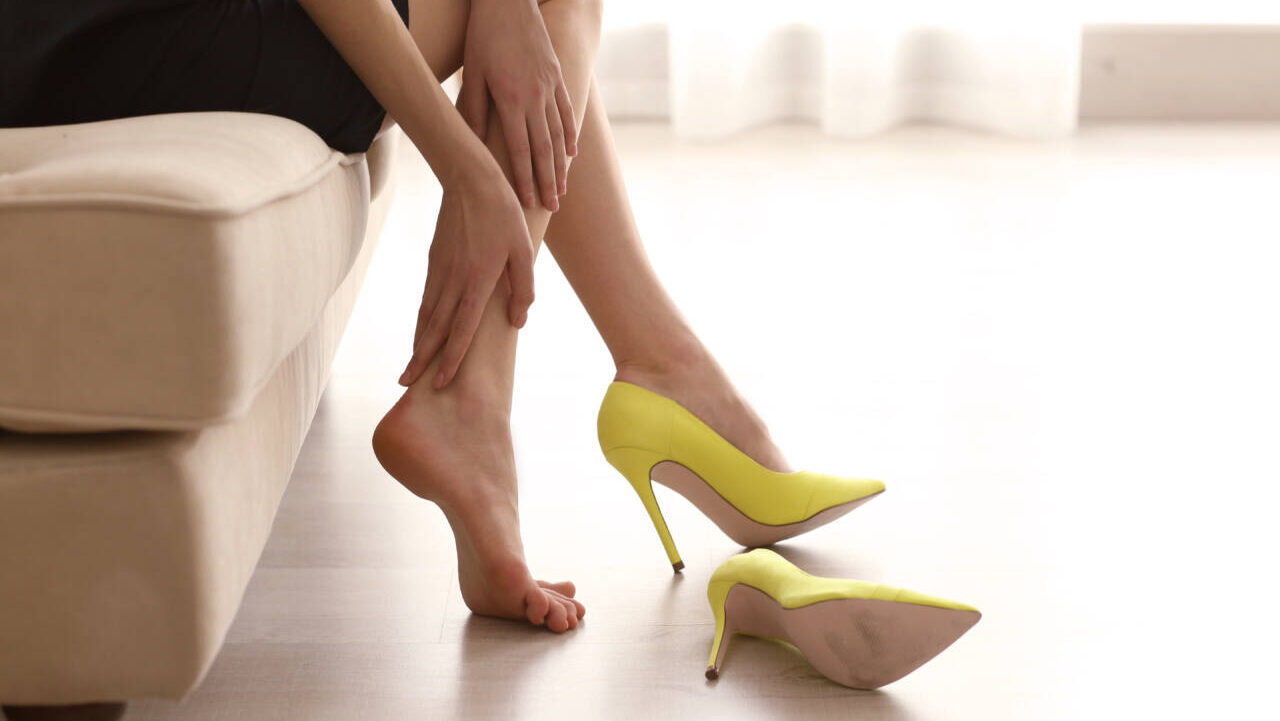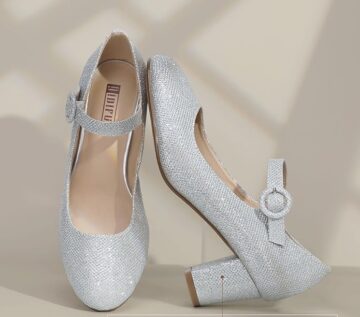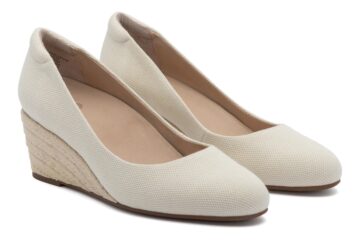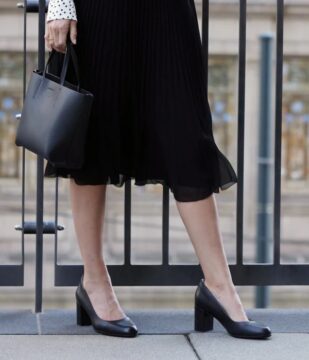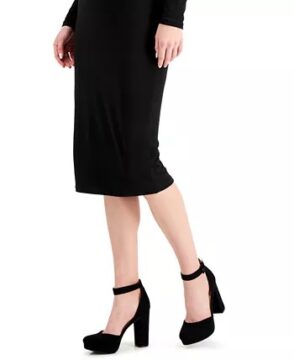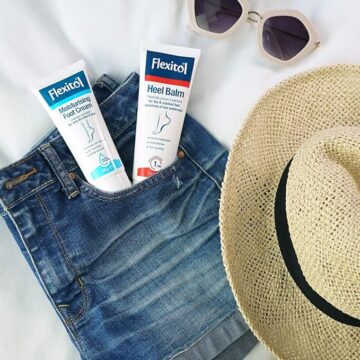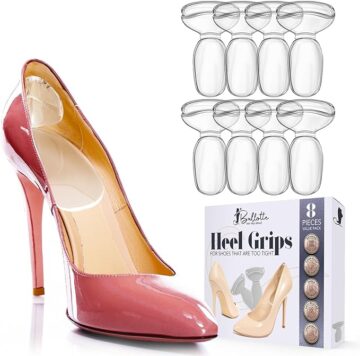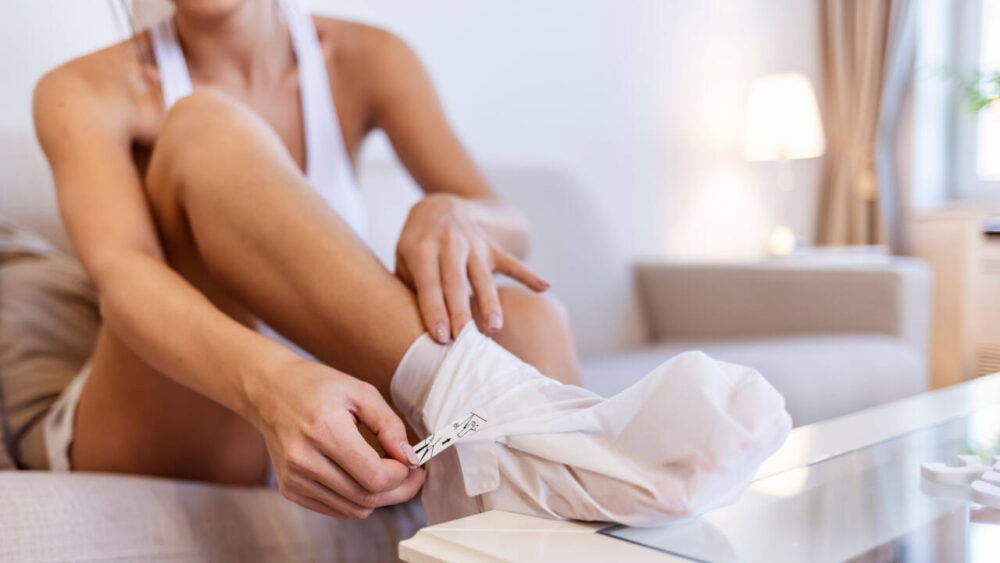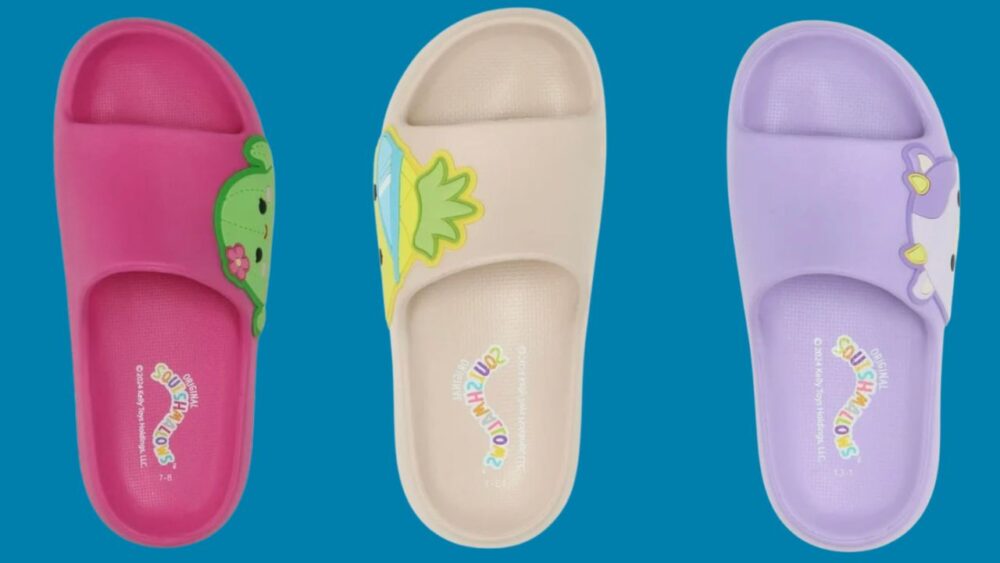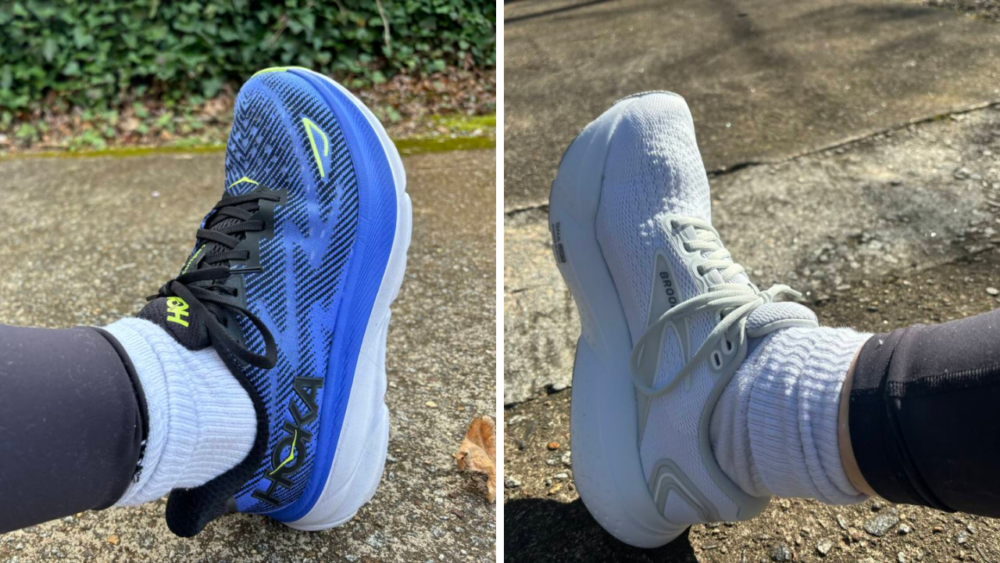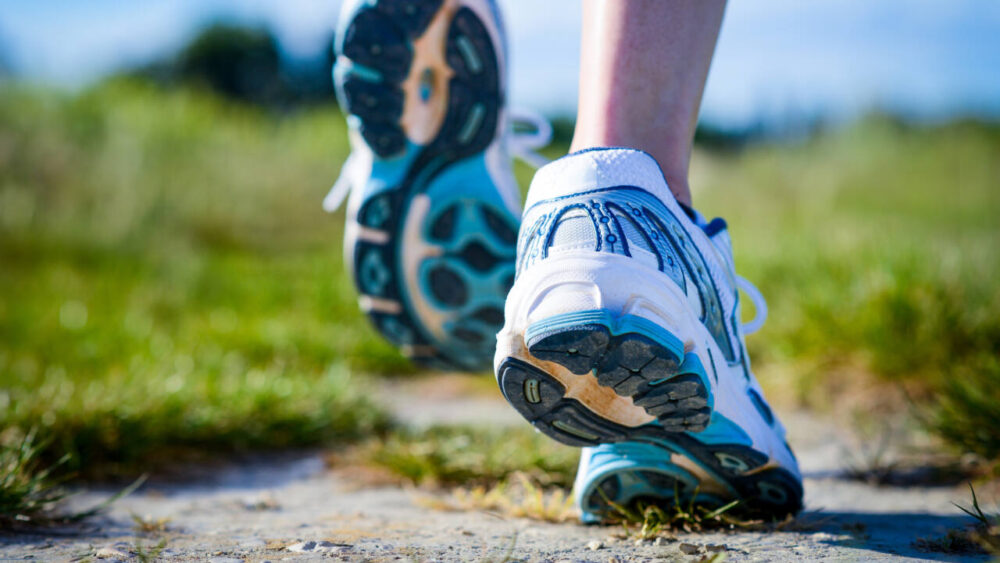How to make high heels more comfortable
The products and services mentioned below were selected independent of sales and advertising. However, Simplemost may receive a small commission from the purchase of any products or services through an affiliate link to the retailer's website.
Back in 1982, cartoonist Bob Thaves created a comic strip in which three characters are looking at a billboard spotlighting a Fred Astaire film festival. “Sure he was great,” says the woman, “but don’t forget that Ginger Rogers did everything he did…backwards and in high heels.”
Who hasn’t heard that quote, which has been repeated often in pop culture and the political arena? But there’s a lesser-known fact about Rogers: those heels at least once caused her feet to bleed after hours of rehearsal, as she details in her autobiography, according to The Washington Post.
She looked great, though!
High heels can make a woman feel taller and sexier. So the discomfort associated with them is often considered a reasonable tradeoff.
“Some of these designer heels kill me,” says Dr. Dana Canuso, a board-certified podiatrist and owner of Skincare for Feet. “But that’s not why you’re wearing them. You’re not wearing Manolos to be comfortable.”
That said, heels don’t have to hurt your feet, especially if you follow some these practical tips from podiatrists. Read on to learn how to wear heels — without bleeding through your shoes.
Choose Moderately High Heels
Heels — when they’re the right height — can actually be quite healthy for your feet.
Your forefoot and your heel are designed to share the pressure you put on them, and the plantar fascia (a band of tissue that connects your heel bone to the base of your toes) stretches and flexes to help keep that balance. If your shoes are too flat, this can stretch the plantar fascia and cause pain. But a moderate heel can solve this problem.
“It’s kind of like a bow and arrow,” says Canuso. “When you’re wearing heels or really supportive sneakers, the plantar fascia can relax a little bit [because] you’re not pulling on it.”
So why are high heels uncomfortable? Often it’s because there’s too much pressure on the ball of the foot. And you can solve that by choosing a more moderate heel height. The sweet spot for a healthy heel is 1.5-3 inches.
The Chunkier, the Better
The thicker the heel, the more stable it will be. Every time you walk, your body is putting pressure on the muscles and bones in your feet, and it’s best to have the widest area to take that impact.
“The best case scenario is to find a wedge shoe, in my opinion,” says Canuso. “Pressure is distributed across entire bottom of the foot and it allows your plantar fascia to not be stretched.”
Dr. Jeremy Ousey, a board-certified podiatrist and owner of the Keep On Your Feet foot and ankle clinic, likes block heels or medium-height Cuban heel styles for their larger surface areas. When your body weight is more evenly distributed, he says, it allows the foot to function as it should.
He recommends the Abeo Veranda Espadrille Metatarsal for this reason and also because of its soft but sturdy construction behind the heel.
“If you look closely, there is a seamed cushion around the back of the heel,” he says. “This can often create a slightly more gentle pressure compared to when the back of the shoe is one individual piece.”
Make Sure Your Shoes Fit Well
It’s actually not easy to find a high heel that fits your foot perfectly, and sometimes that’s because of the toe box.
“Most of the time they are too small in the toe box — that’s the shape of the front of the shoe — and there’s just not enough space in there for your foot,” says Canuso. ‘”If you can have a nice-sized toe box, then maybe the heel won’t be as much of a problem.”
Pointed-toe shoes are making a comeback in 2024, but if comfort is your priority, steer clear of them. You want your toe box to fit snugly but without pinching your toes together.
Go Higher By Wearing Platforms
If the “stick to a 2-inch heel” advice makes your heart sink, there’s another option. You can wear a higher heel if you balance it out with a platform in the front. With this type of shoe, your plantar fascia is still only moderately stretched, but you’re gaining the height you seek.
“If I’m going to an event, I wear a 4-inch heel with a 2-inch platform,” explains Canuso, who says her boyfriend is 6 feet 6 inches tall.
The Estrella Block-Heel Pumps will give you a full 4 inches, but the 1-inch platform offsets the angle to make them more comfortable.
Use a Heel Cream to Prevent Cracking
If you love your high pumps, you may also battle a different issue: cracked skin on your heel.
That’s because the skin on the back of your heel spreads out on impact. You have a fat pad (a mass of closely packed fat cells) in that behind-the-heel area, and it’s designed to protect the skin when this happens. But if the skin around the heel gets dry, the skin itself is less able to expand.
“If a heeled shoe doesn’t have a nice support at the back of it, the heel begins splaying, and that can cause cracking in the skin,” says Ousey. “And those cracks are really painful and can ruin an entire holiday. It’s like having a small paper cut that’s constantly being pulled on.”
To avoid this fate, he suggests buying heels with a closed back to give the heel some cushioning and support. This actually holds the skin together so it doesn’t stretch out.
And if you’re already dealing with those painful cracks? He suggests Flexitol Moisturising Foot Cream for soothing the skin and preventing more cracks from forming.
Use Metatarsal Pads to Cushion the Balls of Your Feet
$15 (2 pairs) from Amazon $9 (for 1 pair) from Target
“Most people really don’t have a problem with the heel in high heels,” says Canuso. “It’s the toe.”
She’s found that metatarsal cushions absolutely help. They provide an extra layer of shock absorption and take some of the pressure off the ball of your foot, redistributing the weight while walking. While the brand isn’t important, Canuso does suggest that you find one that’s made out of silicone or gel.
Use Heel Grip Liner Cushions to Protect Your Achilles Tendon
As mentioned above, poor fit is often a big source of discomfort when wearing heels. If your foot is rolling around inside the heel, you’re more prone to blisters, pain in your Achilles tendon and an uneven distribution of weight on the balls of your feet.
“If the shoe is too big, really you should swap it out for the right size,” says Ousey. “But if the shoe is too pretty to swap out, heel grip liner cushions will offer some protection.”
Use a Silicone Heel Protector
$18 (8-pack) from Amazon $18 (8-pack) from Walmart
Another option to protect your heel inside the shoe is inserting a Ballotte Silicone Heel Protector.
“They give the heel that nice cuddle that holds the fat pad in place so you can protect it and give it extra support and cushioning,” says Ousey. “It’s particularly useful if your heel tends to rub on back of the shoe.”
Ousey adds that he’s a big fan of these for people who suffer from Haglund’s syndrome (aka “pump bump”), which is an inflammation that leads to a small, bony growth on your heel bone.
FAQs
What is the most comfortable heel height?
“The most suitable heel height would be 1.5 to 3 inches for utmost immobility for the foot and ankle,” says Dr. Velimir Petkov, a board-certified podiatrist and the medical director at Premier Podiatry.
Exactly how high to go within that range depends on you.
“If wearing high heels causes problems for your feet, you can wear block heels instead of stilettos and limit the heel height to one or two inches,” he says.
What is the difference between high heels and stilettos?
Stilettos are a type of high-heeled shoe, but the heel itself is very thin (less than one-third of an inch) and very high (at least 3 inches and usually higher).
Needless to say, stilettos are unstable and don’t offer much shock absorption. With so little surface for the pressure of your weight to go into, your heel is taking a lot of pressure. Of course, people don’t wear stilettos for how they feel.
“If it’s your daughter’s wedding and you want to feel sexy out there, put your stilettos on,” says Ousey — though he does recommend keeping a pair of “rescue shoes” in the car.
Are high heels bad for you?
Some high heels are, but Canuso is quick to add that flat shoes can be just as damaging.
“Ballet flats, loafers, Uggs — anything that has no arch support and allows the foot to go completely flat is not good for you, either.”
The thing to remember is that not all heels are created equally.
“Choose shoes from companies like Abeo that have ergonomic elements and consideration for the health of your feet in mind, like the metatarsal support in their pumps,” says Dr. Kathryn Miller, a board-certified podiatrist and the director of In Stride Clinic.
Canuso also recommends heels from Clarks, Cole Haan and Easy Spirit.


